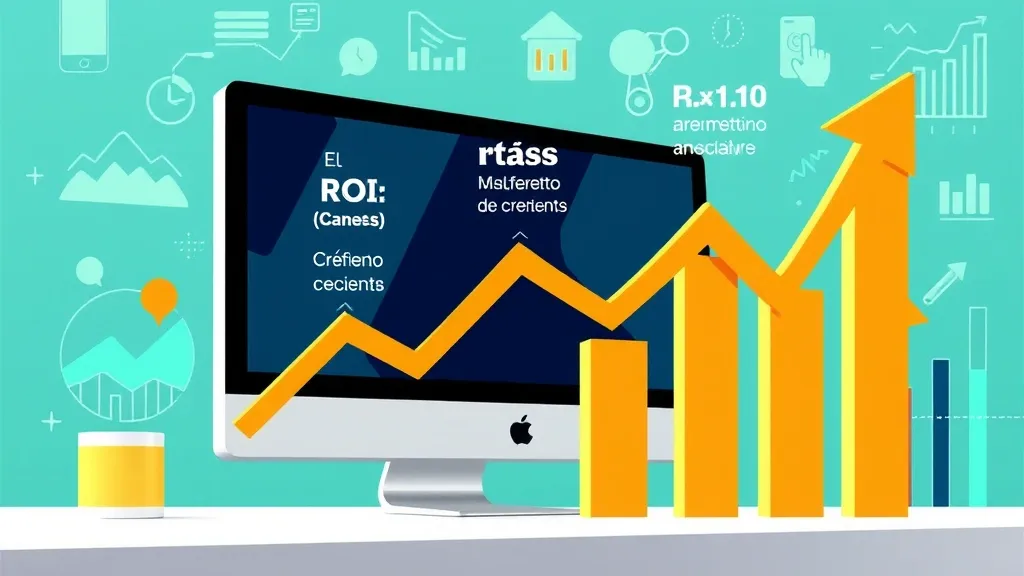Introduction to Digital Marketing Agencies and Their Profitability
In today’s rapidly evolving business landscape, digital marketing has emerged as a crucial component for companies seeking to enhance their online presence and engage with target audiences effectively. As a result, digital marketing agencies have become indispensable partners for organizations aiming to navigate the complexities of online marketing strategies. These agencies specialize in various services, including search engine optimization (SEO), pay-per-click (PPC) advertising, social media management, content marketing, and more.
The profitability of digital marketing agencies is a topic of significant interest for entrepreneurs and investors alike. The demand for digital marketing services has surged in recent years, driven by the increasing reliance on digital channels for consumer engagement. According to industry reports, the global digital marketing industry is projected to grow substantially, offering lucrative opportunities for agencies that can deliver measurable results.
One of the key factors contributing to the profitability of digital marketing agencies is their ability to adapt to changing market dynamics and consumer behavior. As businesses increasingly shift their focus to online platforms, agencies that can provide innovative solutions and stay ahead of the curve are poised for success. Furthermore, the scalability of digital marketing services allows agencies to expand their client base without a proportional increase in costs, leading to higher profit margins.
To understand the profitability of digital marketing agencies, it is essential to consider several key metrics that can impact their financial performance:
- Client Retention Rate: High retention rates indicate satisfied clients and reliable revenue streams.
- Average Revenue Per User (ARPU): This metric helps agencies assess the revenue generated from each client, guiding pricing strategies.
- Return on Investment (ROI): Measuring ROI on campaigns provides insights into the effectiveness of marketing efforts and client satisfaction.
- Operational Efficiency: Streamlining processes and utilizing technology can significantly reduce overhead costs and increase profitability.
In conclusion, digital marketing agencies are not only profitable in the current market but also present a dynamic opportunity for growth. By focusing on key performance metrics and adapting to industry trends, agencies can thrive in this competitive landscape.
Key Metrics to Evaluate Profitability
When assessing the profitability of digital marketing agencies, it is crucial to consider various key metrics that provide insights into financial performance and operational efficiency. Understanding these metrics can help agency owners and stakeholders make informed decisions and identify areas for improvement.
- Gross Profit Margin: This metric indicates the percentage of revenue that exceeds the cost of goods sold (COGS). A healthy gross profit margin suggests that the agency is effectively managing its costs while generating revenue. To calculate this, subtract COGS from total revenue and divide by total revenue, then multiply by 100.
- Net Profit Margin: The net profit margin reflects the overall profitability of the agency after all expenses, including operating and non-operating costs, have been deducted. A higher net profit margin indicates better efficiency in managing expenses relative to revenue. This is calculated by dividing net profit by total revenue and multiplying by 100.
- Client Acquisition Cost (CAC): CAC measures the total cost associated with acquiring a new client, including marketing expenses, sales team salaries, and any other related costs. A lower CAC indicates a more efficient sales process and marketing strategy, contributing to higher profitability.
- Customer Lifetime Value (CLV): CLV estimates the total revenue a business can expect from a single customer throughout their relationship. Understanding CLV helps agencies assess the long-term value of acquiring new clients and can guide marketing investments. The formula involves multiplying the average purchase value, purchase frequency, and average customer lifespan.
- Return on Investment (ROI): ROI measures the efficiency of an investment, calculated by dividing the net profit from an investment by the initial cost of the investment. A positive ROI indicates that the agency is generating more revenue than it spends, which is essential for sustained profitability.
Monitoring these key metrics allows digital marketing agencies to not only gauge their current profitability but also to strategize for future growth. Regular analysis of these indicators can reveal trends, highlight strengths and weaknesses, and facilitate data-driven decision-making that enhances overall business performance.
Case Studies: Successful Digital Marketing Agencies
In the ever-evolving landscape of digital marketing, several agencies have distinguished themselves by achieving remarkable success. This section highlights a few case studies that exemplify effective strategies and key metrics contributing to their profitability.
1. Agency A: Data-Driven Strategies
Agency A, a mid-sized digital marketing firm, specializes in data analytics and performance marketing. By leveraging advanced analytics tools, they track customer behavior and campaign performance in real-time. This approach allows them to optimize their strategies swiftly, ensuring a higher return on investment (ROI) for their clients.
- Key Metrics: An average ROI of 300% across campaigns.
- Client Retention Rate: 85% over three years.
- Annual Revenue Growth: 30% year-on-year.
Agency A’s commitment to data-driven decision-making has not only resulted in significant client success stories but also positioned them as a leader in the competitive market.
2. Agency B: Niche Specialization
Agency B focuses exclusively on the healthcare sector, providing tailored digital marketing services to hospitals and clinics. By specializing in a niche market, they have honed their expertise and built a strong reputation within the industry.
- Key Metrics: 95% of clients report increased patient inquiries.
- Average Client Acquisition Cost: 20% lower than industry standards.
- Annual Revenue: Exceeds $5 million with 40% profit margins.
This focused approach has enabled Agency B to command premium pricing and maintain a loyal client base, demonstrating that niche specialization can drive profitability in digital marketing.
3. Agency C: Innovative Content Marketing
Agency C has carved a niche in content marketing, helping brands create engaging and informative content that resonates with their target audience. Their unique blend of storytelling and SEO has resulted in exponential growth for their clients.
- Key Metrics: Average organic traffic increase of 150% for clients within six months.
- Client Satisfaction Rate: 98% based on post-project surveys.
- Monthly Recurring Revenue: $2 million, with a steady growth trajectory.
By focusing on high-quality content and strategic distribution, Agency C has achieved impressive results, showcasing the power of innovative marketing techniques in driving profitability.
These case studies illustrate that successful digital marketing agencies employ a combination of data analytics, niche specialization, and innovative content strategies to achieve remarkable profitability. Understanding and implementing these key metrics can pave the way for sustained success in the digital marketing landscape.
Conclusion and Future Trends in Digital Marketing Profitability
As we navigate through the evolving landscape of digital marketing, it is evident that profitability remains a significant concern for agencies. The key metrics that dictate success—such as client acquisition costs, conversion rates, and return on investment—are not just numbers; they are vital indicators of an agency’s overall health and sustainability. In this conclusion, we will summarize the current state of profitability within digital marketing agencies and highlight future trends that may shape this dynamic field.
One of the most promising aspects of digital marketing profitability is the continued growth of the industry. As businesses increasingly shift their focus to online platforms, the demand for digital marketing services is expected to rise. This trend creates ample opportunities for agencies to tap into new markets and expand their service offerings. However, with increased competition, it is imperative for agencies to differentiate themselves through innovative strategies and exceptional service delivery.
Furthermore, the integration of advanced technologies such as artificial intelligence, machine learning, and data analytics is transforming the way digital marketing agencies operate. These technologies not only enhance the efficiency of marketing campaigns but also provide deeper insights into consumer behavior, enabling agencies to make data-driven decisions. As these tools become more accessible, agencies that leverage them effectively are likely to see improved profitability.
- Personalization: Consumers are increasingly expecting personalized experiences. Agencies that adopt a customer-centric approach, utilizing data to tailor marketing strategies, will stand out in a crowded marketplace.
- Omni-channel Strategies: As consumers interact with brands across multiple platforms, agencies must develop cohesive omni-channel strategies to ensure a seamless customer journey, ultimately driving higher conversion rates.
- Focus on ROI: Agencies will need to prioritize demonstrating the return on investment for their clients. By utilizing robust analytics and reporting tools, they can showcase the effectiveness of their campaigns, fostering client trust and loyalty.
In summary, while the profitability of digital marketing agencies is subject to various challenges, the outlook remains positive. By embracing technological advancements and focusing on personalized, data-driven strategies, agencies can not only survive but thrive in this competitive environment. The future of digital marketing profitability lies in the ability to adapt, innovate, and deliver real value to clients.

